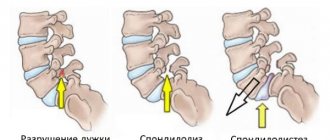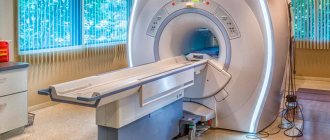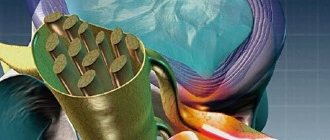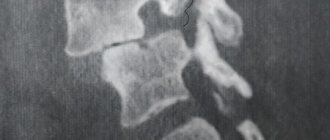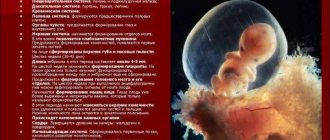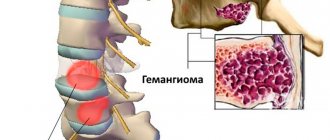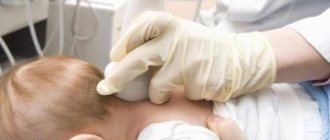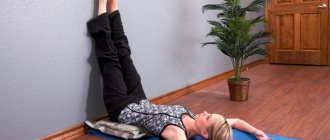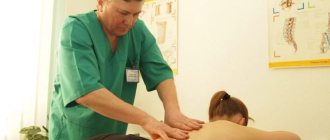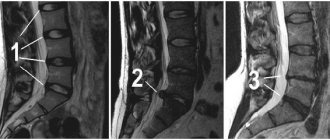Today, almost all middle-aged and elderly people know from personal experience what vertebral displacement is. Each of them at least once experienced severe back pain, which was preceded by a click somewhere in the spine, heard at the moment, for example, of stretching, and then stiffness in the body.
That same sound signaled the displacement of the body of one vertebra relative to another forward or backward. If such displacements occur regularly, this may signal spondylolisthesis, a disease of the spine that can lead to deformation and other unpleasant and painful sensations.
- Classification of vertebral displacements
- Reasons for appearance
- Symptoms
- Consequences
- Diagnostic methods
- Our treatment methods
- Prevention
| ✓ Experience and qualifications of specialists |
| ✓ Individual approach and safe methods |
| ✓ Quality control during the treatment process |
| ✓ Successful results |
Classification of vertebral displacements
There are spondylolisthesis:
- Stable – when the relationship between the vertebrae (displaced and located below) does not change during movement.
- Unstable - the relationship between the vertebrae changes during movement.
There are several types of vertebral displacements:
- Antelisthesis - moves forward;
- Retrolisthesis – moves backward;
- Lateral displacement (slipping).
Today, antelisthesis is most often diagnosed in patients.
There are two degrees of displacement:
- Linear;
- Corner.
Stages of displacement:
- First, the strongest and at the same time weakest point in the human spine is the lumbar region. It is in this area that pain, familiar to many, appears after heavy physical exertion or a long stay in a static position (standing in line, sitting at a table). Such pain is episodic, rarely does anyone come to the doctor with it. In this case, the displaced disk moves out of its normal position by 25% relative to its neighbors.
- The second is that the disc is already shifted by 50%; pain is felt much more often in the lumbar region, including after playing sports or lifting weights.
- Third, a person suffers from constant pain that does not subside even in a calm state. At this stage, the shift occurs by more than 50%, the structure of the vertebrae changes, the nerve roots are pinched, and the structure of the cartilaginous layers is gradually destroyed.
- Fourth, the disease becomes irreversible. A person feels severe pain not only in the lower back, but also in the knees, hips, legs, arms, hands and feet periodically become numb, spasms in the back muscles may be observed, it becomes impossible to walk or stand for a long time, and the quality of life noticeably deteriorates.
Without promptly seeking help from doctors and delaying the treatment process until the last stage, a person may lose sensitivity in the limbs or become disabled.
What is antelisthesis?
Antelisthesis is one of the types of deformation and displacement of the vertebrae. Most often, antelisthesis develops against the background of progressive osteoarthritis or congenital spondylolysis.
Antelisthesis - forward displacement of a vertebra relative to the spine
With this pathology, one or more vertebrae shift forward. If antelisthesis is not treated, the patient will face serious complications in the future, including the development of radicular syndrome and limited mobility of the spinal column.
Types of pathology
Antelisthesis has three main types :
- Cervical antelisthesis;
- Thoracic antelisthesis;
- Lumbar antelisthesis.
Most often in medical practice, lumbar antelisthesis occurs (vertebras L3, L4 and L5); cervical antelisthesis (vertebras C2, C3, C4) is much less commonly diagnosed. Typically, pathology develops in people under 45 years of age.
There are also several types of vertebral displacement :
- Involutive;
- Post-traumatic;
- Isthmic;
- Pathological;
- Dysplastic.
The displacement can be stable or unstable. Unstable displacement implies displacement of the vertebrae when the position of the body changes. There are also four degrees of displacement: with the first degree, the location of the vertebra changes by 1/4 of its length, with the second degree this value reaches half the length of the vertebra, etc.
There are four stages of vertebral displacement
ICD 10 code
Antelisthesis does not have its own code in ICD 10. The pathology is recorded in the group “Other deforming dorsopathies” and is listed in the pathology group M43 .
Prevalence
The prevalence of the pathology is about 2-4% among the population. Usually antelisthesis develops together with another pathology (for example, osteochondrosis, kyphosis, scoliosis, etc.).
Symptoms
The human body instantly signals with pain any disturbances occurring in it. The fact that one of the vertebrae has shifted in some part of the spine becomes known immediately, since the person begins to feel a whole range of very unpleasant sensations, although they may not all appear at the same time.
The degree of displacement and its location affect the symptoms, but the most important and sure sign of a problem is always acute pain.
Displacements in the cervical spine manifest themselves:
- Neck pain and headaches;
- Inability to make full tilts and turns of the head;
- Joint crunching in the spine during movement;
- Numbness of the fingers, pain in the hand, the appearance of “goosebumps”;
- Numb tongue and throat;
- Ear noise, VSD, pressure surges.
Displacements of the thoracic region:
- There is pain between the shoulder blades;
- The back muscles spasm;
- Left back pain (similar to heart pain);
- It is impossible to take a deep breath of air, the sternum is stiff.
Lumbar displacement:
- Sharp and sudden pain in the lumbar region;
- The sciatic nerve can become pinched and inflamed;
- Radiculitis;
- The ability to move is limited;
- Muscle spasms, numbness in toes, goosebumps.
A person does not always find out about injuries to the spine immediately. In rare cases (for example, after a car accident), symptoms of displacement or injury may appear after a couple of days, several months or years. And even if a person only occasionally feels mild pain in the spine, which goes away on its own, then with a heavy load or an unsuccessful tilt, the situation can worsen, as the degree of displacement of the vertebra increases. Therefore, it is important to contact specialists in a timely manner and undergo examinations.
Reasons for the development of pathology
In modern medicine, more than twenty reasons for the development of antelesthesis have been recorded. Most often, only ten of them are found in medical practice.
Common causes of antelesthesis include:
- Congenital disorders and spinal defects;
- Severe spinal injuries, as well as post-traumatic disorders;
- Inflammatory processes of various origins;
- Various neoplasms (both malignant and benign);
- Consequences of surgery (after removal of part of the vertebra);
- Degenerative-dystrophic diseases of various kinds;
- Excessive exercise and improper lifting of weights;
- Spasms and sudden contractions of the spinal muscles;
- Long stay in a forced uncomfortable position;
- Hypothermia.
Consequences
If you leave the pathology without proper treatment, you can get a number of serious complications, including:
- Fecal and urinary incontinence;
- Muscle paralysis;
- Muscle paresis;
- Chronic lower back pain;
- Deformations and curvatures of the spine.
In especially advanced cases, the patient will experience disability.
Video: “What is spinal listhesis?”
Consequences
Displacement of the vertebrae not only causes discomfort to a person, but also affects various organs and parts of the body. Each part of the spine provokes its own diseases or painful sensations.
Cervical region:
- Migraine, headaches, dizziness, memory loss;
- Problems with hearing, vision, fainting;
- Neuralgia, eczema, acne;
- Adenoids, hay fever;
- Various throat diseases;
- Thyroid diseases.
Thoracic section:
- Breathing problems;
- Diseases of the heart, chest, pain in the hands;
- Lung diseases;
- The gallbladder, liver, and stomach suffer;
- Anemia, poor circulation;
- Ulcers, gastritis, allergic reactions;
- Infertility (in some cases).
Lumbar:
- Constipation, colitis;
- Convulsions;
- Menstrual irregularities in women, impotence in men;
- Lumbar pain;
- Cold feet, leg muscle cramps, poor circulation.
Results
Antelisthesis of the fifth lumbar vertebra is a dangerous disease caused by various reasons. Being in the first or second stages, the disease is practically asymptomatic - there is only slight pain and discomfort in the lower back. However, at the third and fourth degrees, the clinical picture completely changes and becomes extremely depressing.
To diagnose the disease, there is no need for expensive research - an initial examination, medical history and x-ray are sufficient. However, antelisthesis in the early stages is not so easy to diagnose.
It is quite possible to cure antelisthesis, the main thing is to detect it in time
If it is possible to detect the disease in time, then the conservative method of treating antelesthesis will be quick and effective. In addition, it will in no way affect the patient’s quality of life.
Advice! If you are always on the alert and undergo regular examinations, you will not have to resort to surgical intervention.
Diagnostic methods
- X-ray - makes it possible to examine the condition of the vertebrae and discs, as well as find out the degree of mobility of individual segments of the spine. An X-ray of the cervical spine should be performed for any injury or suspicion of it, even if the person is unconscious.
- MRI – magnetic resonance imaging. This research method is often used to study the condition of the lumbar and sacral spine. With its help, you can assess the condition of the discs between the vertebrae and joints. The use of MRI avoids lumbar puncture, which was previously often used to diagnose spinal conditions.
- Computed tomography (CT) - makes it possible to examine the lower back for the presence of disc herniations.
Differences from other diseases
When they talk about antelisthesis, we are talking about displacement of only the vertebral body in relation to the rest.
But there is often a situation among people when they do not understand what the difference is between antelisthesis and other diseases of the lower back, or what is worse - they call the disease we are considering by another name (initially incorrect) - spondylolisthesis.
The differences between antelesthesis and other diseases help to quickly detect it
With the development of antelesthesis, as mentioned earlier, the displacement of the vertebral body is directed only forward. With spondylolisthesis, the shift occurs both forward and backward. Both diseases develop in the mobile parts of the spinal column (cervical and lumbar). It's all about the ligamentous apparatus - in these departments it is highly developed.
Video - Difference between antelesthesis and scoliosis
Our treatment methods
Treatment of displacement begins only after a detailed examination of the spine!
Chiropractor massage the female patient spine and back
We use the latest diagnostic systems and effective non-surgical methods for treating vertebral displacement. It is possible to completely get rid of symptoms and stop further development of the disease only with an integrated approach to treatment.
At the first appointment, the doctor diagnoses back pain, assesses motor function, the condition of the spine, checks muscle strength, evaluates reflexes, skin sensitivity, conducts functional tests, identifies changes in the musculoskeletal system, and determines the stage of the pathological process.
If necessary, additional examinations are prescribed to make a diagnosis:
- Radiography
- CT (computed tomography)
- MRI (magnetic resonance imaging)
- Laboratory research
- Consultations of narrow specialists
Pain relief is possible already at the first session using nerve root blockade, acupuncture, biopuncture, vacuum therapy, hirudotherapy, and certain massage techniques.
Pain relief does not treat the cause, but removes the reflex muscle spasm, relaxes the muscles and releases the pinched nerve root.
After a complete diagnostic procedure, the doctor draws up an individual treatment plan. During treatment, the regimen may change.
- Orthopedics (production of orthoses)
- Physiotherapy
- UVT
- Massage
- Exercise therapy
- Manual therapy
- Hirudotherapy
Our task is to help the body launch and accelerate natural recovery processes. Treatment of the disease is completed when the load on the spine is removed, metabolic processes and blood supply are restored.
Surgery is a last resort measure that is required only if the disease is advanced or noticeably progressing. If necessary, we cooperate with leading clinics in Russia and abroad and provide referrals for a consultation with a surgeon.
Remember, self-relief of pain with pharmacological drugs, physiotherapy or folk remedies only allows you to temporarily suppress the symptoms, but does not stop the development of the disease.
Pseudoantespondylolisthesis
Sometimes, with pain in the legs or back, after examination the patient is diagnosed with “pseudoantespondylolisthesis” - what is it?
Pseudoantespondylolisthesis is instability of the vertebra, which allows it to move slightly relative to the axis of the spine. Changing position periodically leads to compression of the nerve endings, causing pain, numbness, and pins and needles in the legs.
The causes of pseudoantespondylolisthesis lie in an unhealthy lifestyle and physical inactivity. The result is weakening of the ligaments, atrophy of the muscular system of the back, and the development of dystrophic-degenerative changes in the spine.
Vertebral instability should be treated with physical activity, which is aimed at strengthening the back muscles and increasing blood circulation in the area of the spinal column.
results
| ✓ Relief of pain symptoms |
| ✓ Restoration of the functions of the musculoskeletal system |
| ✓ Formation of healthy and beautiful posture |
The reputation of the clinic is strengthening and growing every year!
The ADANAYA Clinic, specializing in the treatment of diseases of the spine and joints, has a team of specialized specialists in the treatment of vertebral displacement. For more than 7 years, we have been successfully restoring the health of our patients, restoring them the freedom and joy of movement without pain. Treatment at the clinic gives positive results in 98% of cases, which is confirmed by reviews of our specialists.
We do not leave you alone with the disease. We heal with our hands and heart.
Physical therapy to help!
The selection of a set of necessary physical exercises for a patient with spondylolisthesis is carried out only by a specialist!
More often, static exercises and complexes aimed at stretching tendons and muscles are recommended.
It is forbidden:
- Perform exercises when pain worsens
- Exercise in a vertical position.
- Increase the tilt of the body by more than 20 degrees (in this case, repeated displacement is possible).
If conservative treatment methods do not lead to the expected result, the doctor may recommend surgery. To avoid surgery, if there is any suspicion of vertebral displacement, it is necessary to urgently be examined by a specialist!
Prevention
Doctors at the ADANAYA clinic recommend:
- Moderate but regular physical activity, physical activity and compliance with other healthy lifestyle rules.
- When working at a desk or computer desk, watch your back position. You need to sit straight, and the height of the chair should be adjusted (seat at knee level). You can place a small bench or other support under your feet.
- If the work is standing or you have to stand in a long line, it is important to change your position often (every 10 minutes). Walking in place and rolling from heel to toe also helps.
- When lifting and moving heavy objects, it is important to distribute the weight correctly. It is best to divide the load into parts so that you can carry it not in one hand, but in two. If you need to lift something heavy, then it is not your back that should bend, but your knees, so that there is no strain on the lower back. It is better to carry cargo over long distances in a backpack, which will be located on the back, and not in a bag over the shoulder or in one hand (this is safer for the spine).
- You also need to sleep properly. The bed should be semi-soft, and instead of a cushion under the head there should be a rectangular pillow.
- Playing sports will also not hurt, but instead of running it is better to choose race walking, since it is less traumatic for the spine.
- It is recommended to avoid drafts and hypothermia, as this may cause additional tension in the muscles adjacent to the spine, which creates additional conditions for illness.
